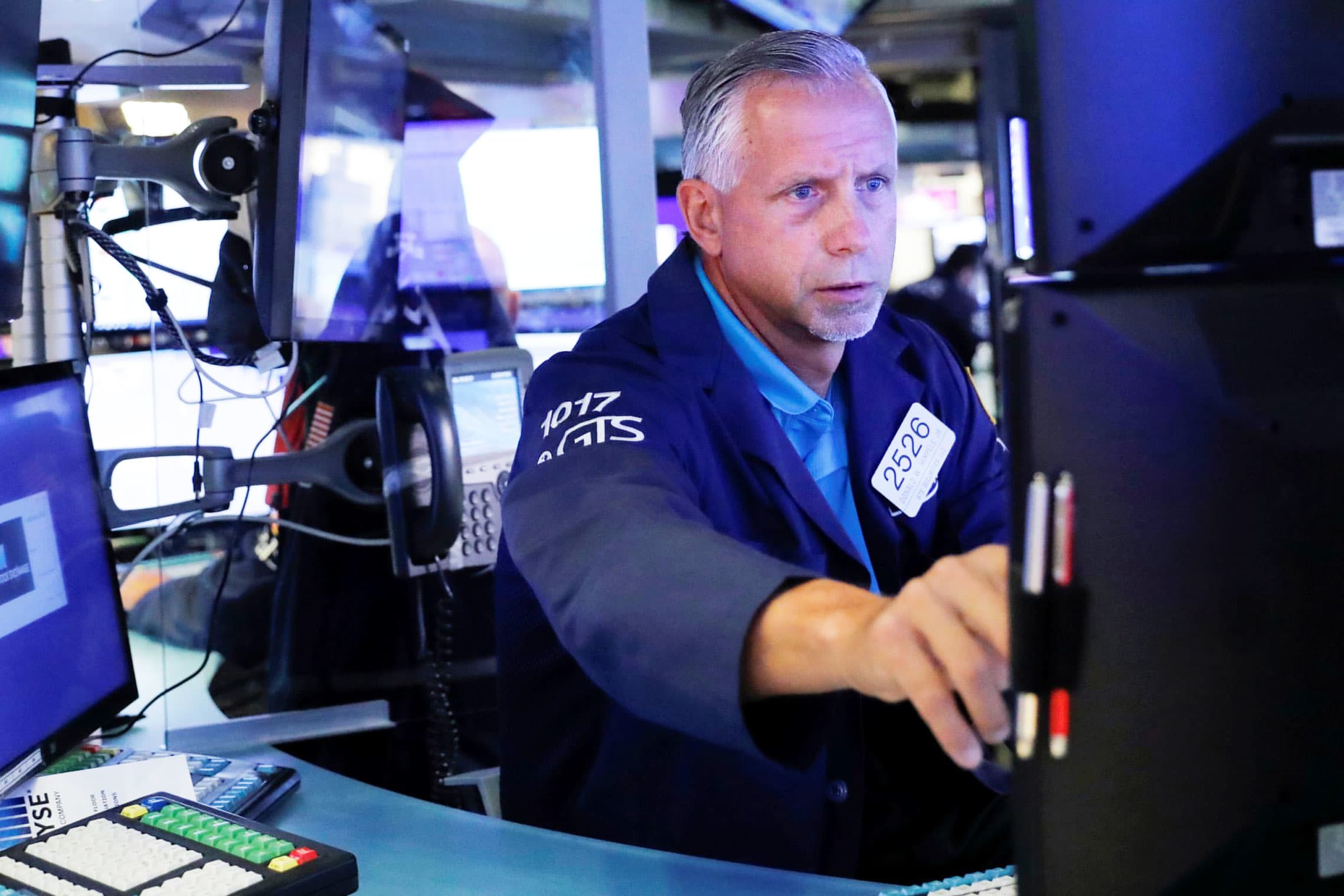
The Dow Jones Industrial Average moved lower on Thursday as Wall Street looked to close out a rough month.
The 30-stock average dropped 400 points, or more than 1%, after rising at the opening bell. The broader S&P 500 was down 0.8%, while the tech-heavy Nasdaq Composite ticked down 0.3% after being solidly in positive territory.
Concerns about inflation and supply chain issues continued to hamper stocks. Shares of Bed Bath & Beyond fell more than 20% in early trading after the company said those issues hurt the company’s second quarter results, and the news also weighed on fellow retail stocks. Walgreens Boots Alliance and Home Depot fell more than 2%, making them two of the worst performers in the Dow.
Energy and financial stocks, which have been some of the best performers in recent weeks, took a step back on Thursday, weighing on the Dow. Shares of Goldman Sachs and JPMorgan were down by more than 1%.
Tech stocks struggled to hold on to an early gain even as the 10-year Treasury yield was little changed, with Apple and Amazon turning negative.
However, chip stocks, including Nvidia and Micron, were higher after weighing on the broader market on Wednesday. Netflix set a new intraday record high.
Thursday’s weakness comes as Wall Street wraps up what has been a rough September for equities.
Entering Thursday, the Dow was down 2.7% for the month, the S&P 500 was off by 3.6% and the Nasdaq Composite had shed 4.9%. September has lived up to its losing reputation with the market beset by fears of a China property crisis, rising inflation and a late interest rate surge sparked by the Federal Reserve signaling it would start removing stimulus soon.
“We wouldn’t get caught up in any end-of-quarter machinations today and continue to advise fading rallies (especially in tech) as the coming weeks will stay rocky,” wrote Adam Crisafulli of Vital Knowledge.
The 10-year Treasury yield has surged over the past week, leading to more weakness in tech and other growth stocks. The yield was churning near 1.54% on Thursday after ending August near 1.30%.
September’s losses have led to a middling third quarter for the market. For the 3-month period, the Dow is slightly in the red, while the Nasdaq Composite is just about flat. The S&P 500 is up 1.4%. The S&P 500 is still up 16% on the year.
October has a reputation for some violent sell-offs but overall is typically the start of a better seasonal performance for stocks. The S&P 500 averages a 0.8% gain for the month, according to the Stock Trader’s Almanac.
“September lived up to its reputation and dented stock portfolio returns, but not too badly,” wrote Ed Yardeni of Yardeni Research. “There has been a lot of concern that higher wages, higher energy prices, and higher transportation costs will weigh on earnings for the remainder of this year and into 2022. It’s certainly something we’ll be tracking. But so far, analysts remain relatively sanguine.”
Investors were also keeping an eye on Washington as Senate Majority Leader Chuck Schumer said late Wednesday that the chamber had reached a deal to avoid a government shutdown this week. Schumer said he would schedule a vote on Thursday for the stopgap measure that would keep the government running into early December. The deal would still need to pass the House.
Fed Chair Jerome Powell and Treasury Secretary Janet Yellen were testifying before the House Financial Services Committee on Thursday morning. Yellen reiterated her call for Congress to raise the debt ceiling, saying that failure to do so would be “catastrophic.”
On the data front, initial jobless claims for the prior week came in at 362,000. Economists were expecting a print of 335,000, according to Dow Jones.
Become a smarter investor with CNBC Pro.
Get stock picks, analyst calls, exclusive interviews and access to CNBC TV.
Sign up to start a free trial today




